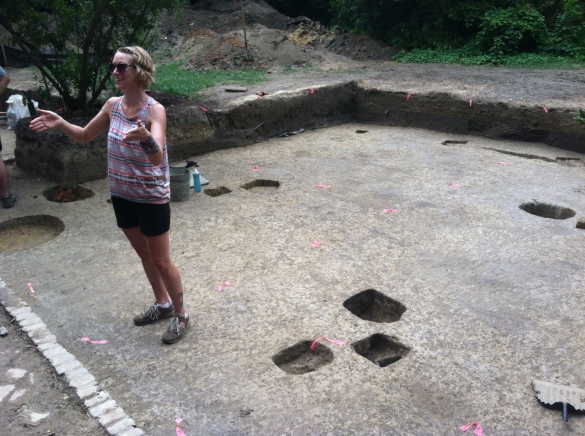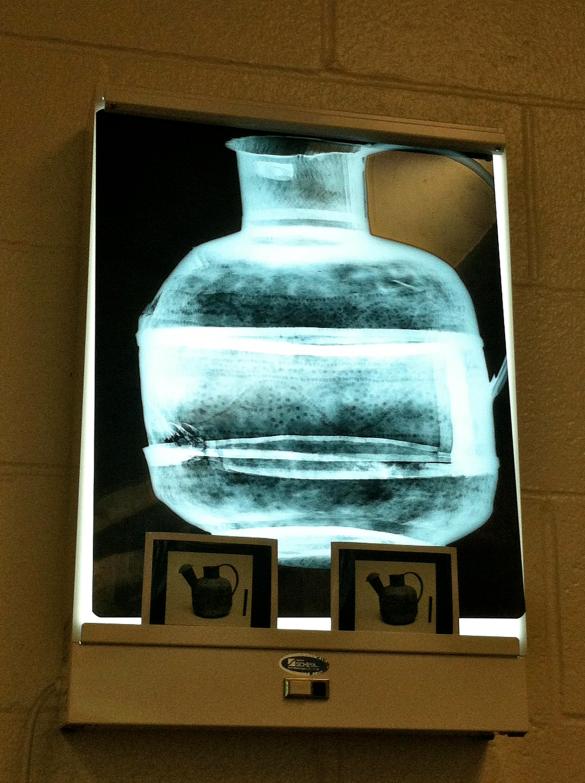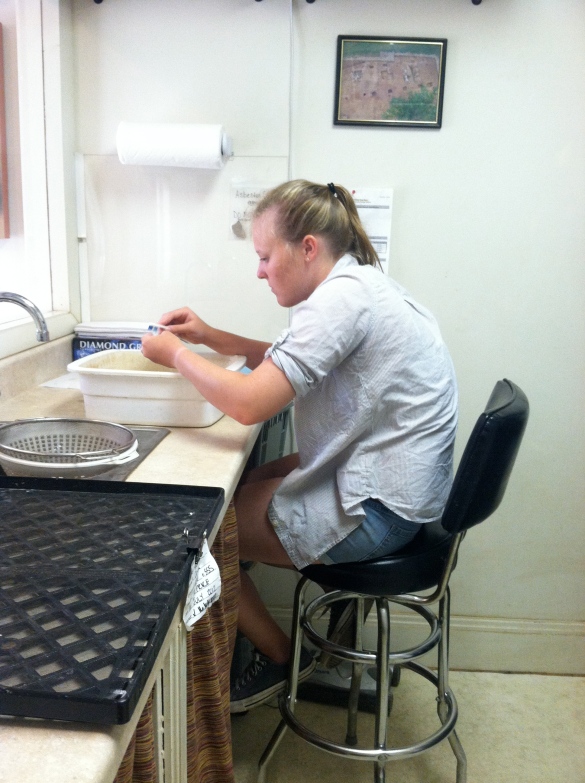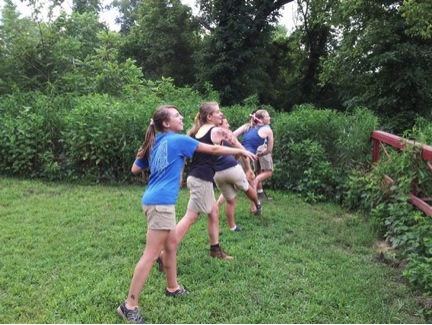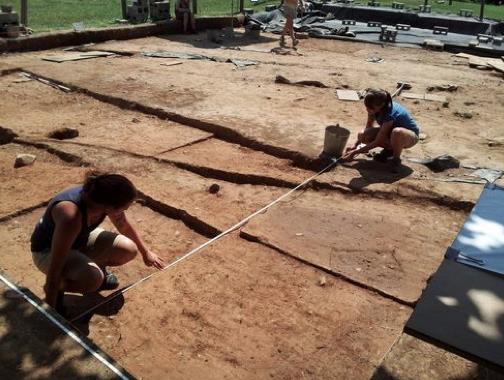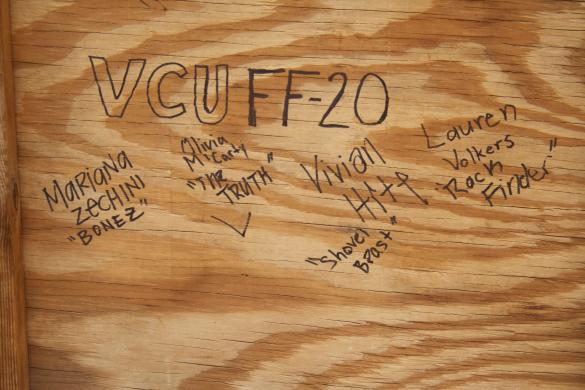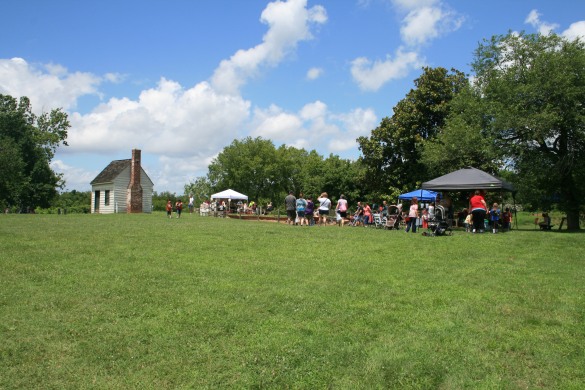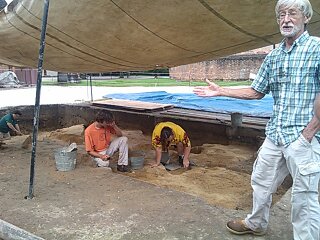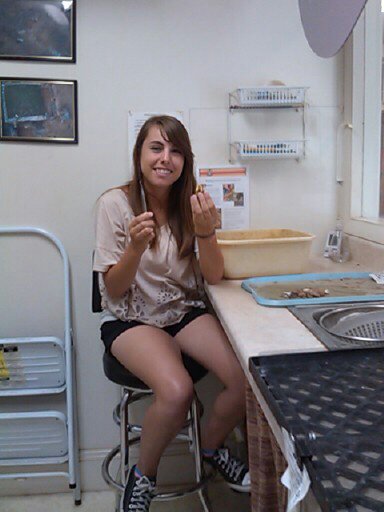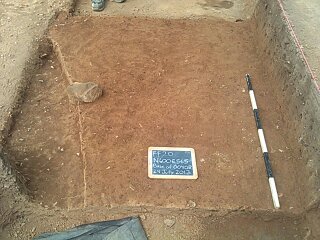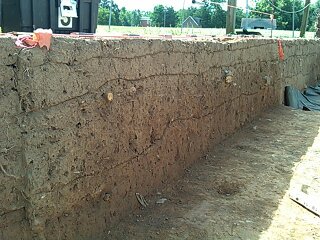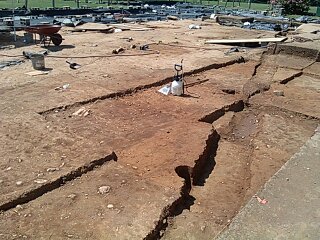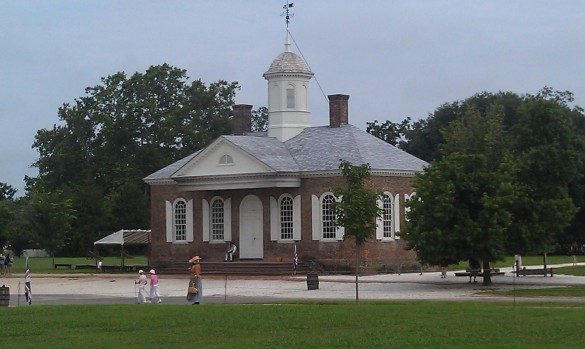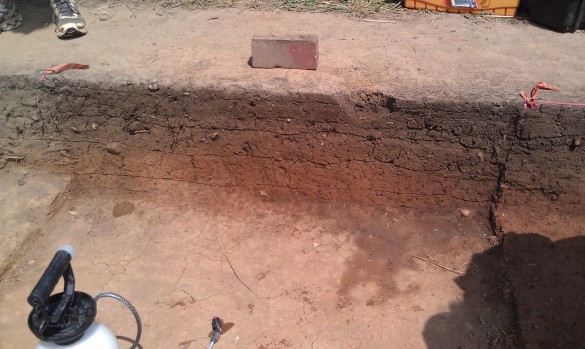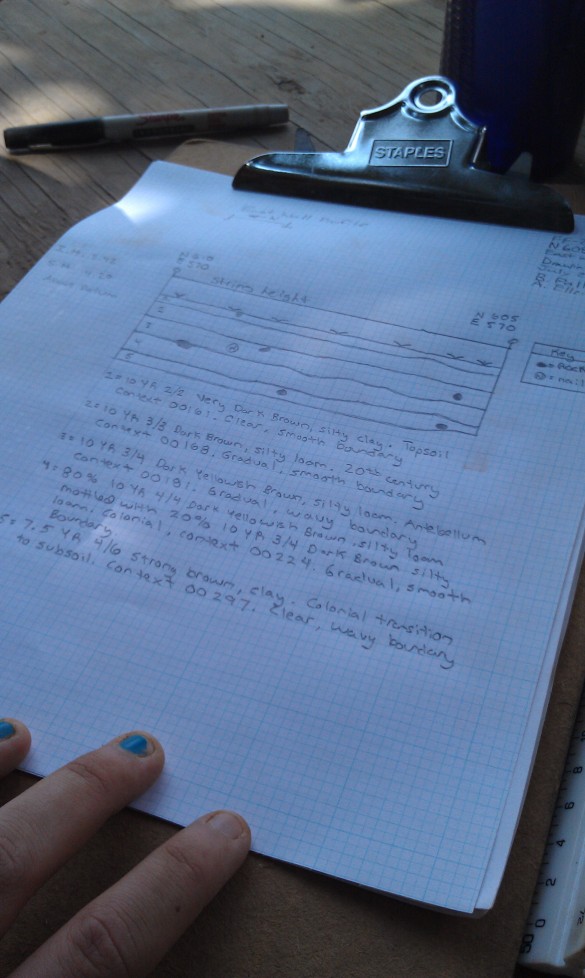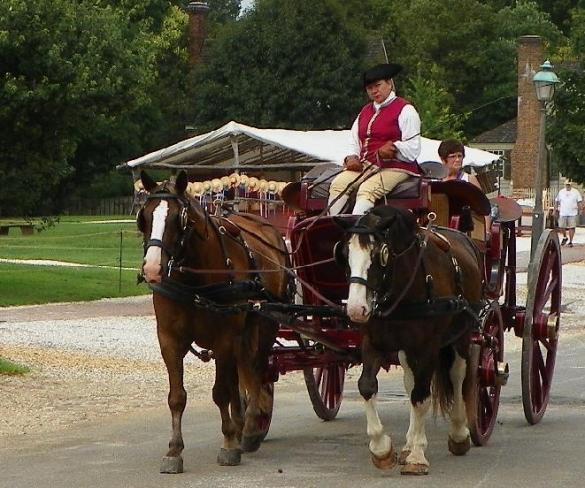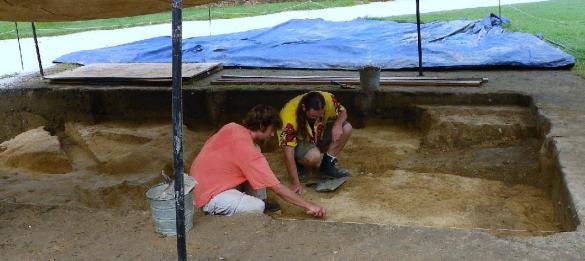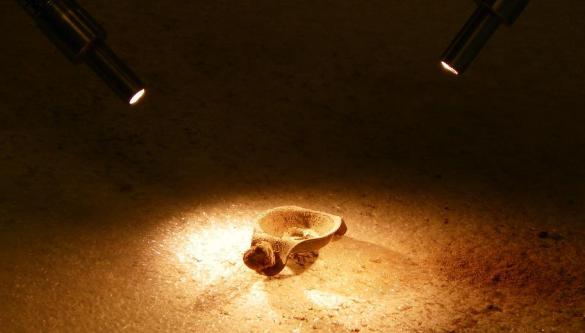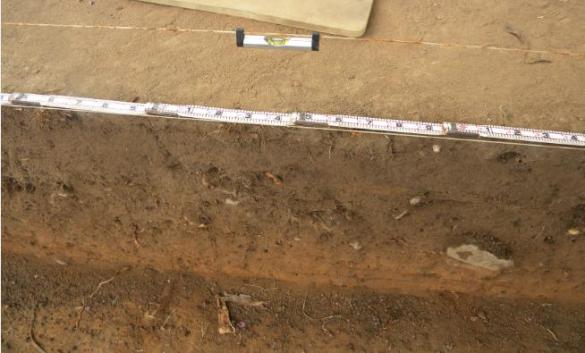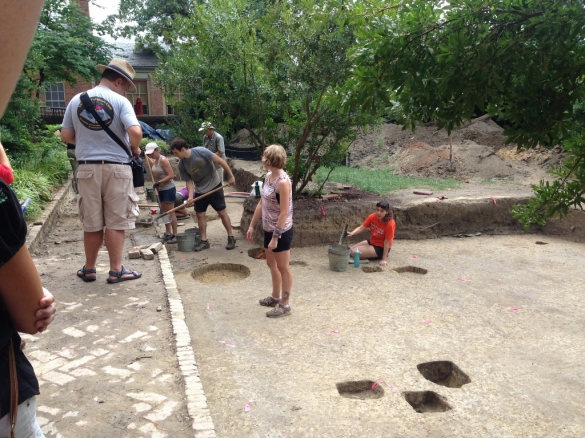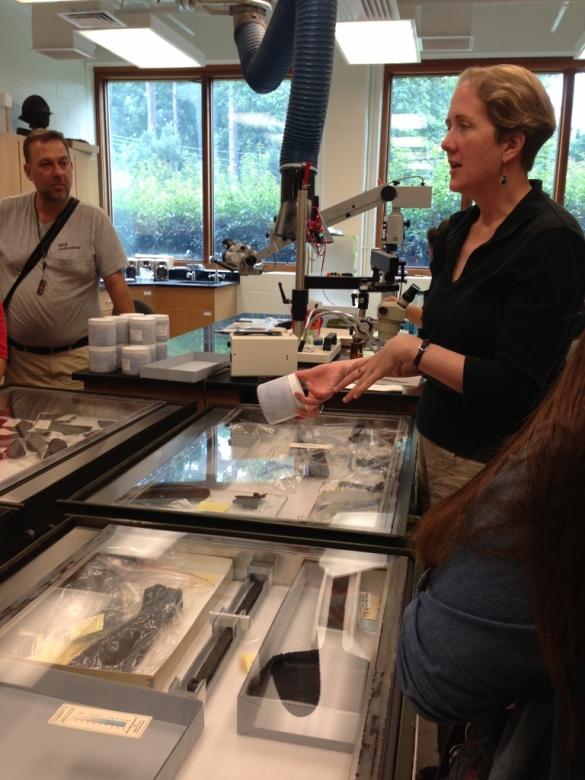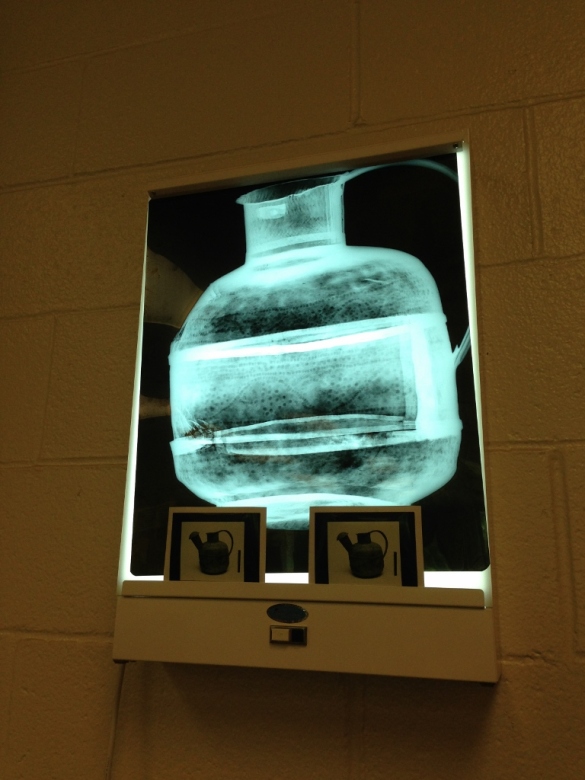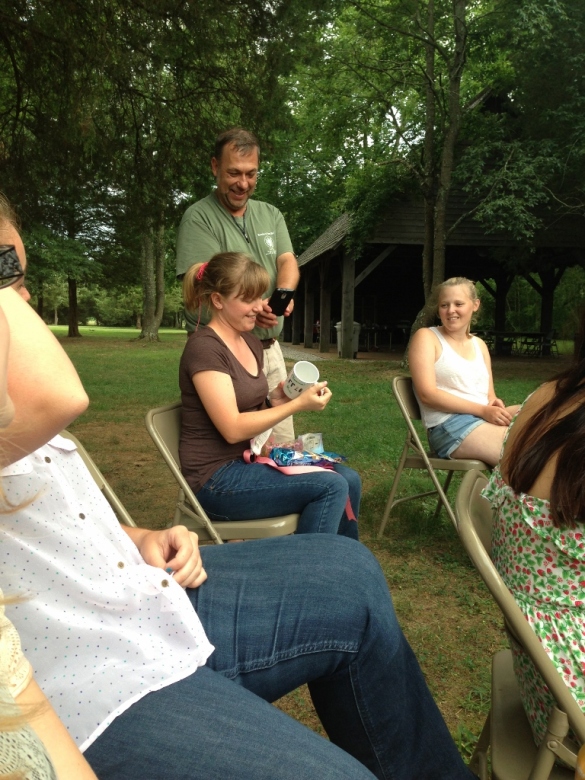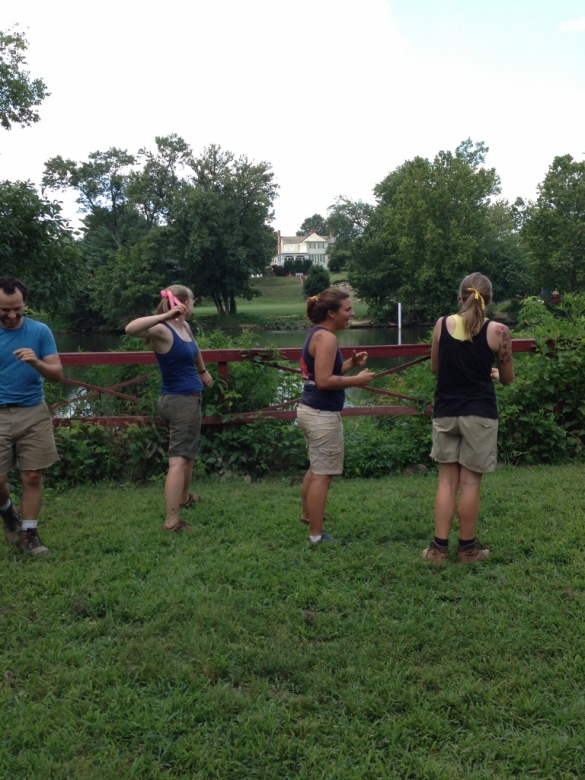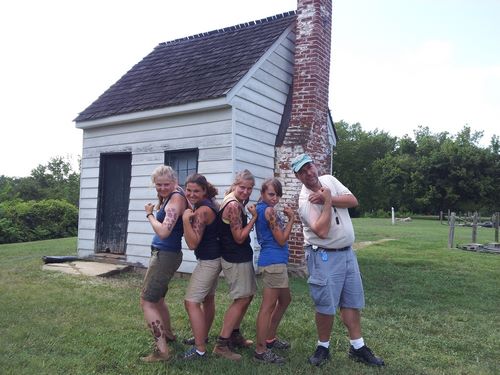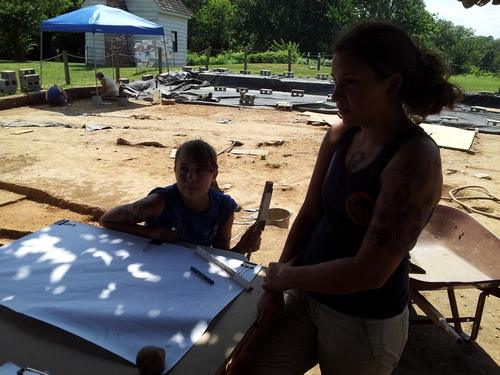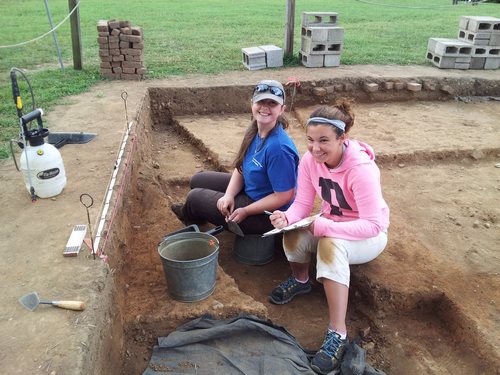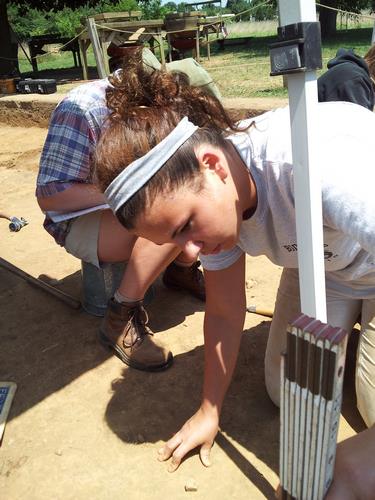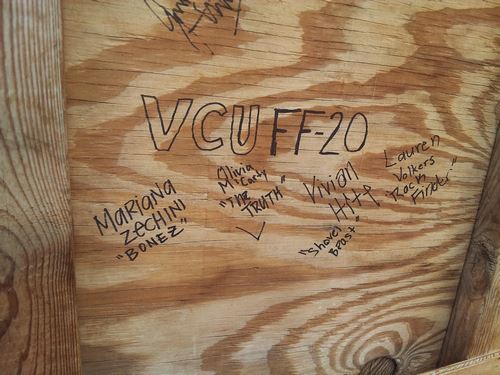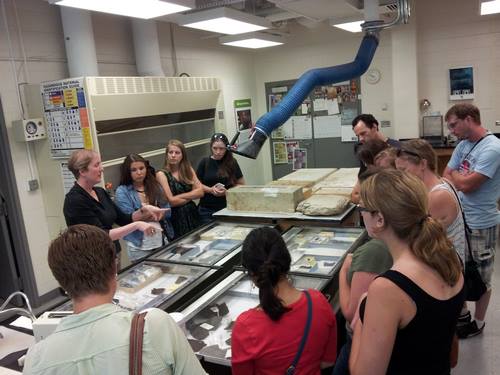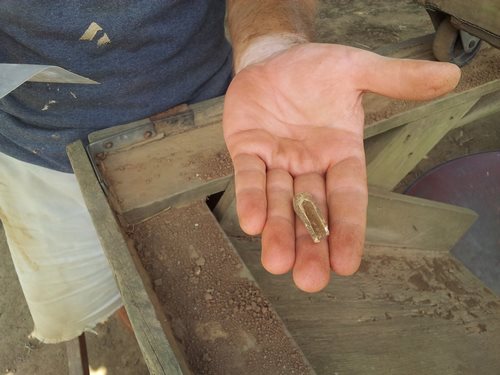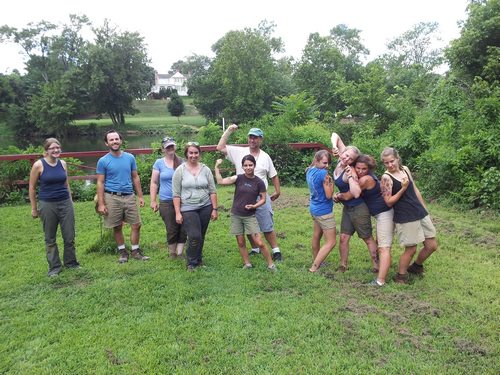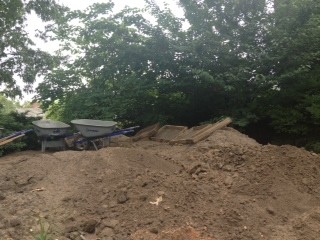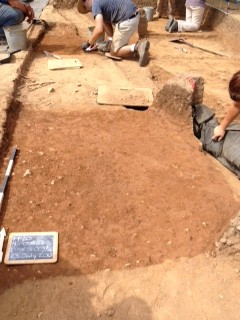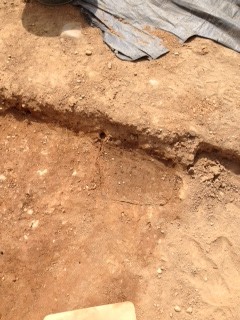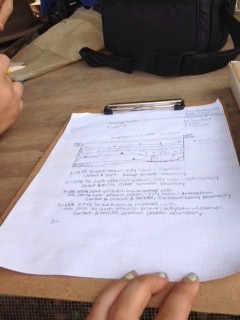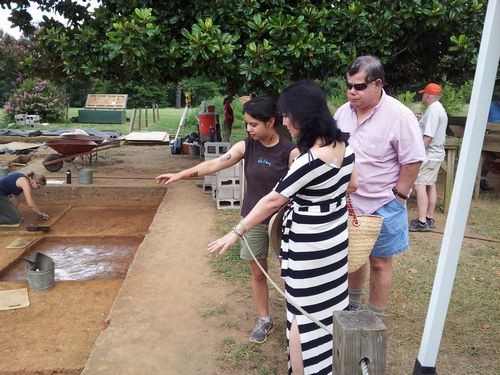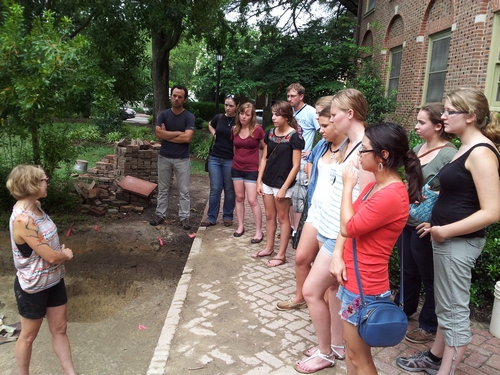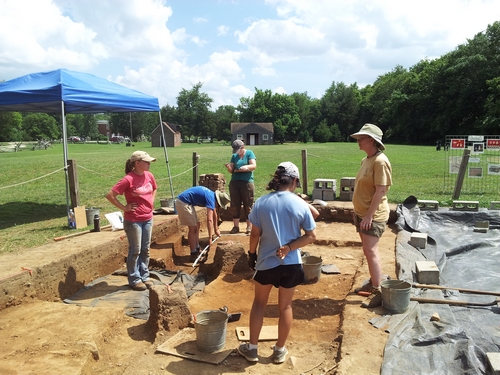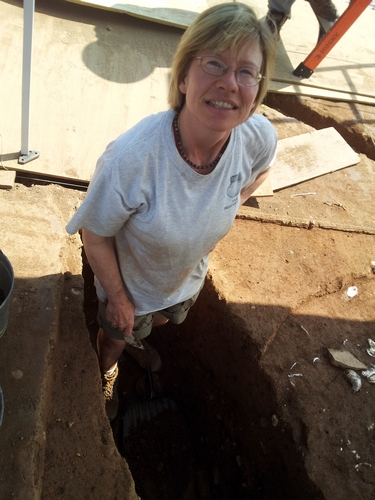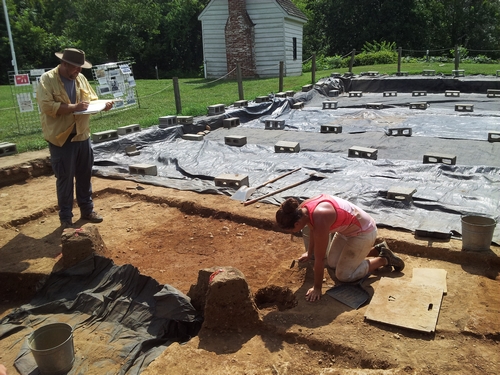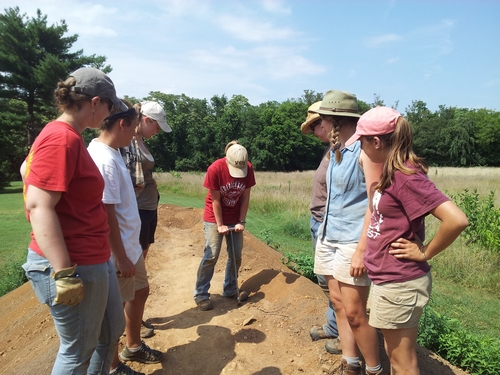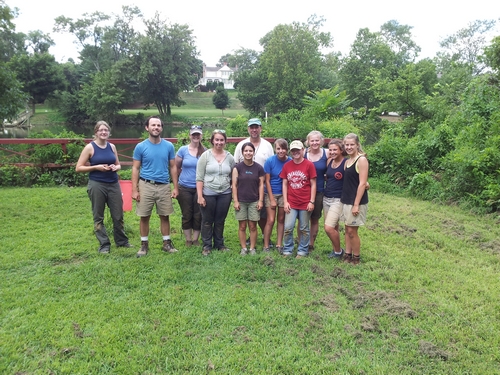by Olivia McCarty, VCU student
My last week of field school was a great one, we got to go to Williamsburg, we finished our unit, and I learned how to profile.
The week started out with a trip to Williamsburg, where we got to visit the two archaeological sites that they are presently working on. The first site’s goal was to try and find the original Market Square buildings foundation, which is shown in a 1782 map, unfortunately they weren’t having much luck, but it was still a very interesting site to see. The other site that we saw was the Bray School, which was a school that was created during the colonial era. This school is quite special because it was established to teach enslaved African American children how to read, write, and learn vocational skills at a time when this idea was unfortunately very unpopular. Crystal Castleberry, a former VCU student and Ferry Farm field student, is lucky enough to be working on the project and gave us a great tour of the site.
Once the tour was completed we had some free time to walk around Williamsburg and eat lunch at the delicious Cheese Shop. After lunch, we then got a lecture on conservation by Emily Williams, who is the Conservator of Archaeological Materials at Colonial Williamsburg. She gave us lots of advice about what it means to be a conservator, and what skills you need to have. I for one definitely did not know how important it was to have a good science background to be a conservator and I also enjoyed getting to walk around their lab after her lecture and see how they worked on preserving all of their artifacts. The tours and the lectures were a great way to start the week and I was already looking forward to Tuesday when I would be back in my own unit once again.
Since it was the last week of field school I knew that we really had to work hard to make sure that we finished in time, and boy did we begin the morning with a bang, the kids archaeology camp came over and help us screen we had to shovel through a lot of our antebellum layer to keep up with the demand. The antebellum layer at Ferry farm, is usually the most artifact heavy layer, so after the kid’s camp left my partner and I dumped out our artifact bag and sorted everything out just so we would know what we had found. I enjoyed seeing all the different ceramic sherds together, and I also tried to remember the names of all the different kinds of ceramics we had, including a particularly pretty porcelain piece I found. Once we finished taking inventory of our artifacts, it was back to our unit to finish our antebellum layer.
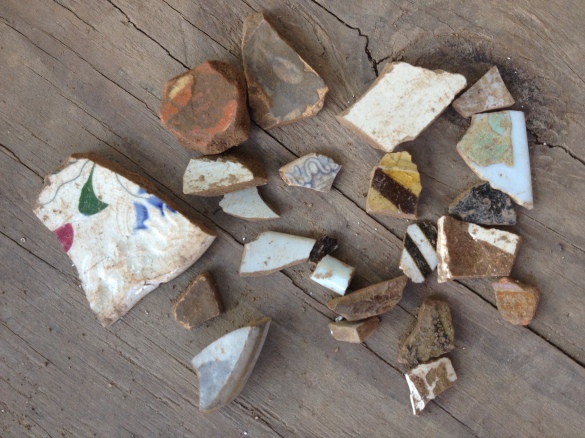
Our findings!
As we smoothed and leveled out our unit, we unfortunately discovered that our 20th century utility trench was wider then we originally thought, and that our trench also bisected a 20th century shovel test pit from a previous archaeological excavation that would also need to be excavated separately. So once we closed out our antebellum layer we had to begin to re-excavate our utility trench. After some more heavy handed shoveling, and checking out the profile of our walls we were finally convinced that we had cleared out all of the dirt from that feature and were ready to move on to the next feature on our list, the bisected shovel test pit. However time was not on our side and the day was coming to a close so our shovel test pit would have to wait until Wednesday.
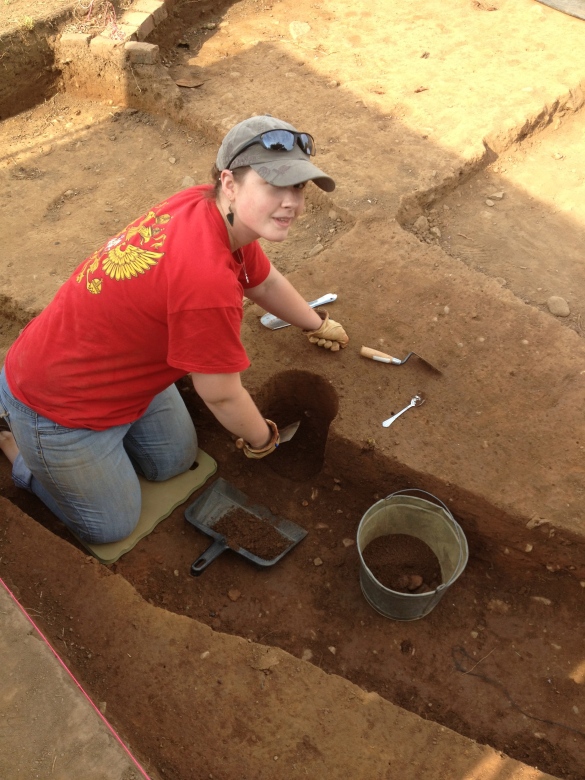
Stephanie works in our unit.
Wednesday came quickly enough and Stephanie and I were ready to attack our shovel test pit and clear it out of our unit. As we started to excavate we quickly realized that this wouldn’t be the same process as when we dug out our trench because this feature was so much smaller and there was limited space so we took turns digging it out. Along with it being a smaller feature we were also given different tools to help us with our excavation and traded in our hefty shovels for a small kitchen spoon that got into the hard to reach places easily and scooped out the dirt so we could get a clear view of the bottom of our shovel test pit. The end was soon in sight and we finished up the feature very quickly after that.
Finally we were ready to start excavating our unit as a whole once more. With only two and a half days left of field school we started to tackle the last layer that was in our way, the colonial layer. We got some help from Ferry Farm intern Katie, who pitched in to help us meet our deadline. After making a decent dent in our colonial layer, we yet again noticed another soil change in the soil. Upon closer inspection we could see that it had a clearly defined long skinny rectangular boarder, and with some discussion we decided that we had just discovered a very nice root mold, which at Ferry Farm we excavate separately from the rest of the unit. Preparing to work on yet another feature we began to dust up the units loose dirt and noticed that the root mold wasn’t the only feature we were seeing. Right on the northwest side of our trench there was an irregular shaped blob that was also an unusual soil color. We hadn’t merely discovered just one feature; we were fortunate enough to discover two. Fearing that my last two days of field school were going to be working on excavating even more features we asked our field director Laura Galke what we should do and she decided that we should stop excavating, because we didn’t have enough time to excavate these new features properly. As we closed out our last unit for the season it was bitter sweet knowing that on one side of things I wouldn’t have to deal with anymore features and yet also wanting to find out what that second feature could possible be.
On Thursday with our unit completed we were given many other smaller jobs to complete and even had a surprise field trip. Our first and newest task we had to complete was profiling. Profiling is when you take a look at the walls in your unit and map out the stratigraphy you see, Ashley and Vivian explained this process to Stephanie and I and helped us get started with scoring our different layers. Having scored, or marked, the four different soil changes on our wall we began to try and map it by measuring a layer every half a foot and marking it on our map. I very much liked the profiling process, as I feel like it brought everything we were working on together, and really helped me hone my ability to see where the different soil changes occurred. With our unit and profile completed we were then sent to the lab to finish out our unit summary, where we described what we found in each layer and noted anything that my have been significant or helped the director when she writes her end of the season report about the findings at Ferry Farm. With everyone in my group having completed their units early Dr. Means was able to finagle one last field trip in to help us learn more about archaeology vocations.
This field trip was to Dovetail, a local cultural resource group in Fredericksburg that does archaeology at sites where the archaeological record is going to be destroyed or modified by having a building or some other human activity effect it. We were able to see where they keep the artifacts, how they work with all the different states laws that they have to follow, and what kind of qualifications you need to work there. It was a great last field trip to have because field school is the first step you need to take to work at one of these cultural resource companies.
The last day of field school was a sad one, but we still had plenty of work to do. We started out the day with a ceramics test, a quick discussion about some readings, and then gave all the units we worked on a fresh scrape so that they could begin mapping the whole area we excavated this year. As it approached midday we as a field school headed down to the river to join in on a fun Ferry Farm tradition of trying to copy a young George Washington and throw a stone across the Rappahannock river. Even though the river is much smaller than it was in Washington’s day no one in my group was lucky enough to make it across the river, but many valiant efforts were made.
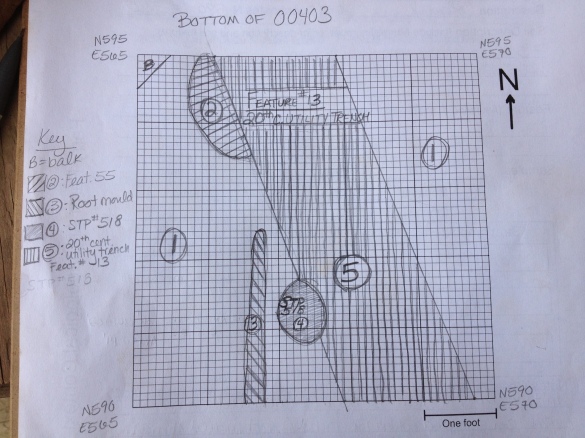
A plan view!
We returned to the site and had the option of profiling or going inside and working on paperwork. I decided to enjoy the nice weather and stay outside and work on profiling along with some of my other classmates. The next profile I had to work on was a lot more complicated because it had two trenches showing up in its walls but knowing that this was going to be my last project of the field season I worked hard on completing it. I finished shortly before it was time to leave and after we covered up our site one final time we also were given a marker and joined all previous field school groups of writing our names on the toolbox. It was a great ending to the field school. These past five weeks I have learned so much, gotten to experience a myriad of new things, and met a great group of people through this class. I feel so lucky for having been apart of Ferry Farm, and I know that this place, and experience has given me a great foundation to build upon as I plan to continue to further my exploration in the field of archaeology.
